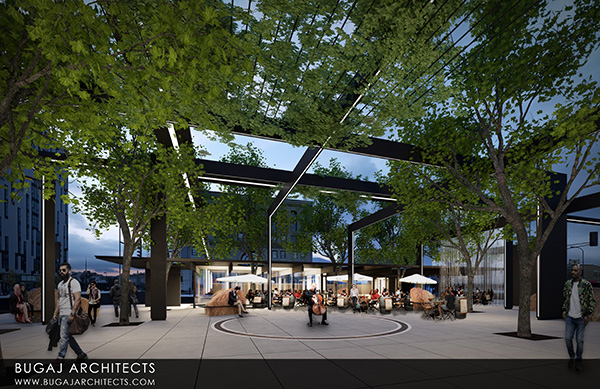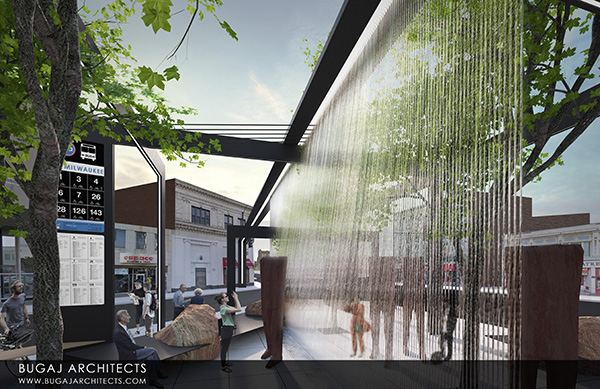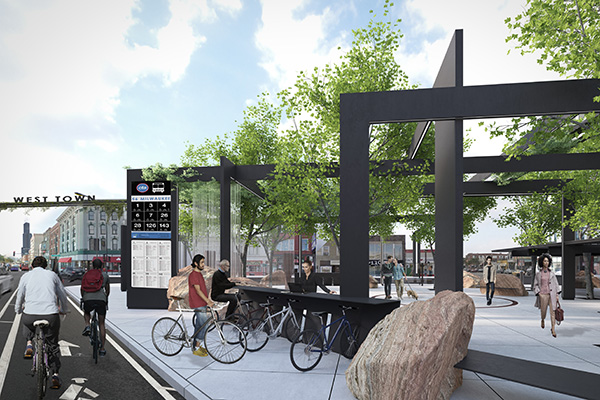After years of planning, a Northwest Side neighborhood group is ready to showcase a conceptual overhaul for Wicker Park’s Polonia Triangle (also commonly known as the Polish Triangle). The proposed changes come from the Polish Triangle Coalition, formed in 2011 by members of surrounding neighborhood groups and preservationists seeking to serve as stewards of the public plaza.
Bound by Division, Ashland, and Milwaukee avenues, the triangle is located in a busy corridor, but members of the Polish Triangle Coalition say that the sprawling concrete plaza is uninviting and underutilized. And with the flood of new construction happening in the area, there is no better time to discuss improvements to Polonia Triangle, says Elaine Coorens, Polish Triangle Coalition member and publisher of the Wicker Park-focused digital outlet Our Urban Times.
“We’ve got more and more density happening in the area and almost no open space,” Coorens says. “And here we’ve got a plot of land that’s an entryway into four different communities.” The group’s plans are still conceptual, she adds, but the primary goal is for the plaza to become a central gathering point and place of interest for commuters and nearby residents.
The group has partnered with Wicker Park-based Bugaj Architects to help flesh out a new vision for the site’s overhaul. Conceptual images from Bugaj reveal a Miesian structural steel installation with new signage and other architectural features such as waterfalls and rocks. The redevelopment would remove the Nelson Algren Memorial Fountain.
“We created this very abstract grid that’s suspended above the triangle,” says Bugaj Architects principal Anna Bugaj, referring to the proposed steel overhang. “It’s like the gateway and how the triangle connects the neighborhoods … the grid will become a place to grab a coffee, meet a friend, and take a break.”
Bugaj notes that the site is challenging due to the busy streets that surround it, but adds that green features and water walls will dampen vehicle noise and foster a more calming atmosphere.
Vicki Grancki, a preservation consultant whose business was previously located near the Polish Triangle, says she hopes the new signs will explain the site’s name and highlight important cultural and architectural sites nearby. “This area was an incredible dense heart of Polish civic and business life in Chicago for 100 years,” Grancki says.
For any redevelopment of the plaza to proceed, the Polish Triangle Coalition has to continue sorting out engineering logistics with the CTA and the Chicago Department of Transportation, Coorens says. According to Coorens, an elevator will eventually be added to the Division Blue Line station as a part of the CTA’s 20-year goal to make all rail stations accessible to people with disabilities, but determining where it should go is the challenge.
The Polish Triangle Coalition and Bugaj Architects believe that a reimagined Polish Triangle will be a significant next step in the neighborhood’s history.
“There’s this explosion of development and the Polish Triangle should really be a part of it,” says Bugaj. “We’re always seeking more park space and more communal space, and we have it here, but we’re trying to make it blossom.”





